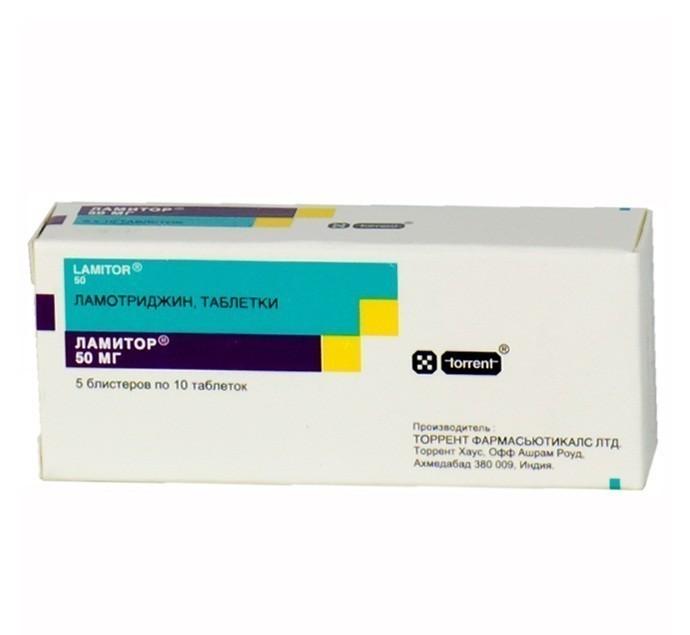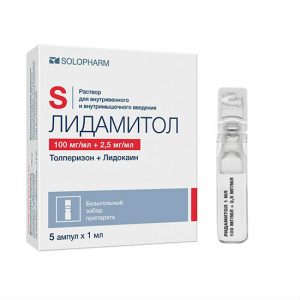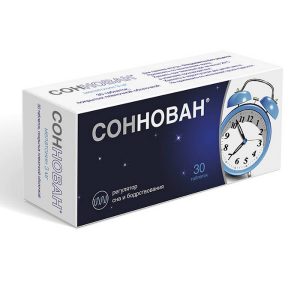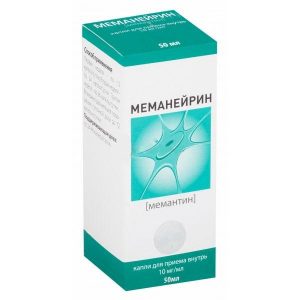Description
Release form
Tablets
Packing
10 pcs. – blister packagings (5) – packs of cardboard.
Pharmacological action
Anticonvulsant (antiepileptic) drug. Blocker of voltage-gated sodium channels. It triggers a block of pulsed discharges in a neuronal culture and inhibits the excessive release of glutamate (amino acids that play a key role in generating epileptic seizures) along with inhibition of glutamate-induced effector pulses.
Pharmacokinetics
Absorption
After oral administration, lamotrigine is rapidly and completely absorbed from the gastrointestinal tract. Cmax in plasma is observed 2.5 ± 1.5 hours after oral administration. The time to reach Cmax is somewhat longer if the drug is taken after a meal, but the degree of absorption remains unchanged. Pharmacokinetics is linear in nature up to a dose of 450 mg – the maximum single dose that has been investigated. There are significant individual differences in the Cmax values of the drug, but individual concentrations differ very little.
Distribution of
Plasma protein binding is approximately 55%.
Metabolism
Metabolized in the liver to form predominantly glucuronides.
Excretion of
T1 / 2 in healthy adults is 24-35 hours.
Average clearance in healthy people is 39 ± 14 ml / min.
Lamotrigine is excreted in the urine as glucuronides. Less than 10% is excreted unchanged in urine. Only 2% of metabolic products are excreted in the feces.
Pharmacokinetics in special clinical cases
T1 / 2 lamotrigine is largely dependent on concomitant drug therapy.
T1 / 2 of lamotrigine decreases to 14 hours when combined with drugs that induce the activity of isoenzymes of the cytochrome P450 system, such as carbamazepine and phenytoin, and increases on average up to about 70 hours when combined with sodium valproate.
T1 / 2 lamotrigine in children is usually shorter than in adults. T1 / 2 in children is approximately 7 hours when taken with drugs that induce isoenzyme activity, such as carbamazepine, phenytoin, phenobarbital and primidone. T1 / 2 increases to 45-55 hours when combined with sodium valproate.
A study of the pharmacokinetics of lamotrigine in single doses in patients with kidney disease suggests that the pharmacokinetic parameters change slightly, however, the concentration of the main metabolite in the form of glucuronide increases almost 8 times due to a decrease in renal clearance.
Indications
Lamitor is recommended as monotherapy and adjuvant therapy for adults and children over 12 years of age: simple partial convulsive seizures
complex partial seizure seizures
secondary generalized tonic-clonic seizures
primary generalized tonic-clonic seizures
absences typical
absences atypical
myoclonic seizures other
Lamitor is also used as adjuvant therapy for children aged 2 to 12 years.
Contraindications
severe hepatic dysfunction
hypersensitivity to lamotrigine and other components of the drug.
Use in cases of impaired liver function
Contraindicated in severely impaired liver function.
Use for impaired renal function
In patients with impaired renal function in the terminal stage of the disease, an accumulation of the metabolite in the form of glucuronide should be expected. Therefore, if necessary, the appointment of such patients should be careful.
Use in children
The initial dose of Lamitor for children from 2 to 12 years old, not taking sodium valproate, but taking other antiepileptic drugs that induce isoenzymes, is 2 mg / kg / day (in 2 divided doses) during the first 2 weeks and 5 mg / kg / day (in 2 divided doses) over the next 2 weeks. The maintenance dose is 5-15 mg / kg / day (in 2 divided doses).
The initial dose of Lamitor for children taking sodium valproate in combination with other antiepileptic drugs that induce isoenzymes is 0.2 mg / kg 1 time / day for the first 2 weeks, then 0.5 mg / kg 1 time / day for the next 2 weeks. Then the dose should be increased to achieve the optimal therapeutic effect. The maintenance dose is 1-5 mg / kg (in 1 or 2 doses).
Use during pregnancy and lactation
The drug should not be prescribed during pregnancy and lactation, unless the expected benefit to the mother outweighs the potential risk to the fetus and the baby.
Special instructions
Information on the use of Lamitor in elderly patients is limited. Therefore, with caution, a drug of this category of patients should be prescribed.
If a dose of Lamitor is exceeded, skin rash may develop (in this situation, the drug should be discontinued).
In some cases, when prescribing the drug, the development of severe skin rash is possible (including Stevens-Johnson syndrome). Such reactions often develop in children. The lamp should be canceled at the first sign of a rash. The risk of developing such complications increases with the appointment of Lamitor at the same time as sodium valproate and if the used dose of Lamitor exceeds the recommended initial and maximum daily dose.
If skin rash develops, discontinue use immediately.
When using the Lamitor, it is possible to develop such hypersensitivity symptoms (in some cases even fatal), such as fever, malaise, cold symptoms, drowsiness, lymphadenopathy, facial swelling and, in very rare cases, impaired liver function, hematopoiesis (leukopenia and thrombocytopenia) ) In most patients, these symptoms disappear after discontinuation of the Lamitor.
If a rash, chills, cold symptoms, drowsiness occur during the use of the drug deterioration in the control of convulsive seizures (especially during the first month), liver function tests, renal function indicators, and blood coagulation should be monitored.
With abrupt cancellation of the Lamitor, an increase in seizures is possible. The dose of Lamitor should be reduced gradually over 2 weeks.
In patients with impaired renal function in the terminal stage of the disease, an accumulation of the metabolite in the form of glucuronide should be expected. Therefore, if necessary, the appointment of such patients should be careful.
Influence on the ability to drive vehicles and control mechanisms
The question of the ability to drive vehicles and work with moving mechanisms while taking Lamitor is decided individually, taking into account the clinical situation.
, a component of a 30% aqueous dispersion, Composition of
Tablets1 tab.
lamotrigine * 25 mg
-50 mg
-100 mg
* is a non-proprietary international name recommended by WHO. In the Russian Federation, the international name is spelled – lamotrigine.
Dosage and administration
The initial dose of Lamitor for adults and children over 12 years of age not taking valproate sodium, but taking other antiepileptic drugs that induce isoenzymes, is 50 mg 1 time / day. during the first 2 weeks and 100 mg / day. (in 2 divided doses) over the next 2 weeks. Then the dose should be increased to 200-400 mg / day. (in 2 doses).
The initial dose of Lamitor for patients taking sodium valproate in combination with other antiepileptic drugs that induce isoenzymes is 25 mg every other day for the first 2 weeks and then 25 mg 1 time / day. over the next 2 weeks. Then the dose should be increased to achieve the optimal therapeutic effect. The maintenance dose is 100-200 mg (in 1 or 2 doses).
The initial dose of Lamitor for children from 2 to 12 years old who do not take sodium valproate, but who take other antiepileptic drugs that induce isoenzymes, is 2 mg / kg / day. (in 2 divided doses) during the first 2 weeks and 5 mg / kg / day. (in 2 divided doses) over the next 2 weeks. The maintenance dose is 5-15 mg / kg / day. (in 2 doses).
The initial dose of Lamitor for children taking sodium valproate in combination with other antiepileptic drugs that induce isoenzymes is 0.2 mg / kg 1 time / day. during the first 2 weeks, then 0.5 mg / kg 1 time / day. over the next 2 weeks. Then the dose should be increased to achieve the optimal therapeutic effect. The maintenance dose is 1-5 mg / kg (in 1 or 2 doses).
Side effects of
Side effects noted when prescribing Lamitor as monotherapy
From the central nervous system: dizziness, headache, drowsiness, sleep disturbance, fatigue.
From the digestive system: nausea.
Allergic reactions: maculopapular skin rash (2%), most often occurs in the first 4 weeks after the start of treatment and disappears after discontinuation of the drug. In some cases, Stevens-Johnson syndrome, angioedema, toxic epidermal necrolysis.
Side effects noted when prescribing Lamitor as an additional therapy to standard antiepileptic drugs
From the side of the central nervous system: dizziness, headache, drowsiness, imbalance, increased fatigue, irritability, aggressiveness, tremor, confusion.
From the side of the organ of vision: diplopia, impaired visual acuity.
From the hemopoietic system: neutropenia, leukopenia.
From the digestive system: nausea, vomiting, dyspeptic symptoms.
Drug interaction
When used simultaneously with antiepileptic drugs that induce liver isoenzymes (phenytoin, carbamazepine, phenobarbital, primidone), Lamitor’s metabolism is enhanced, which may require an increase in its dose.
Sodium valproate competing with lamotrigine for metabolizing liver isoenzymes inhibits its metabolism. There is no evidence that Lamitor is able to induce or inhibit liver isoenzymes that metabolize other drugs. Lamitor can induce its own metabolism, but this effect is very small and does not cause serious clinical manifestations.
Although some patients experience changes in plasma concentrations of other antiepileptic drugs, Conducted controlled studies did not confirm the effect of Lamitor on the levels of simultaneously taken antiepileptic drugs in blood plasma. In vitro studies indicate that Lamitor does not compete with other antiepileptic drugs for binding to plasma proteins.
Overdose
Symptoms: nystagmus, ataxia, dizziness, drowsiness, headache, nausea, loss of consciousness, coma.
Treatment: gastric lavage, activated charcoal intake. If necessary, conduct symptomatic therapy.
Storage Conditions
The product should be stored in a dark place at a temperature not exceeding 30 ° C.
Shelf life
2 years.
Active ingredient
Lamotrigine
Terms and conditions
prescription
Dosage form
tablets
Possible product names
LAMITOR 0.05 N50 TABL
Lamitor 50mg Tab. X50
Lamitor 50mg Tab. X50 /! Until 04.13g /
LAMITOR TAB. 50MG No. 50
Lamitor tablets 50 mg, 50 pcs.
Torrent, India




